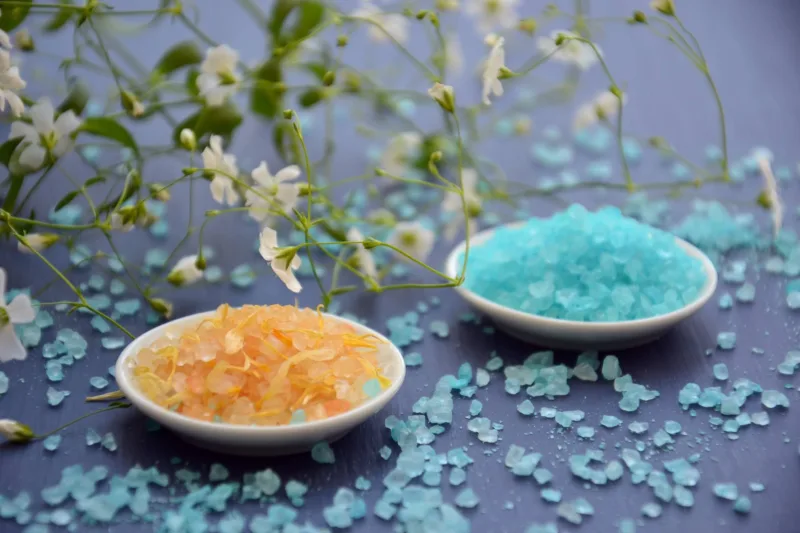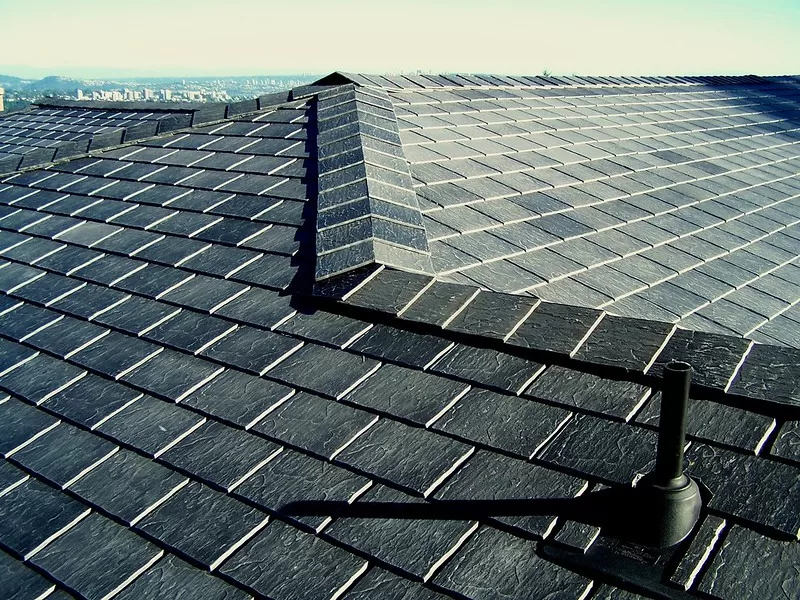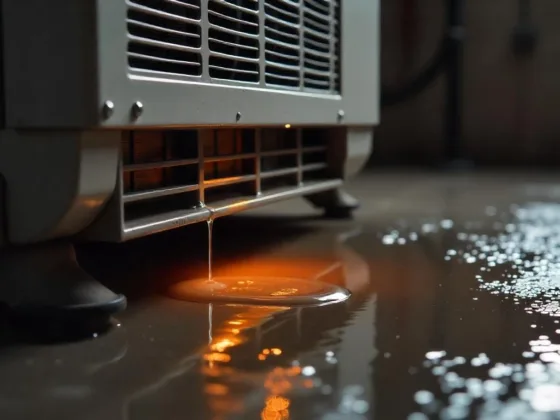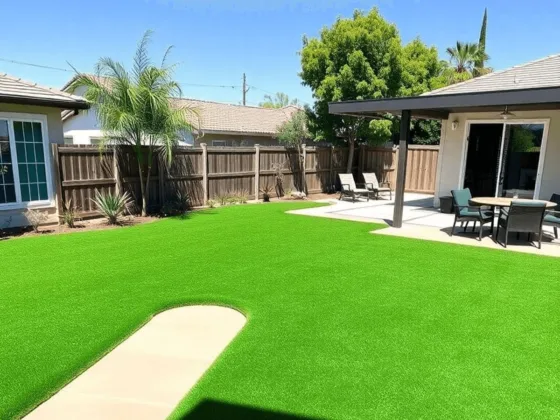Introduction
Epsom salt, or magnesium sulfate, is a popular remedy in gardening circles. Many gardeners use it to boost plant growth, improve flower blooming, and enhance a plant’s overall health. It’s often touted as a versatile solution for various plant issues, thanks to its rich magnesium and sulfur content.
However, not all plants benefit from Epsom salt; some may even suffer adverse effects. Understanding which plants don’t like Epsom salt is crucial for maintaining a healthy garden. We’ll explore 8 such plants in detail:
- Azaleas
- Blueberries
- Succulents and Cacti
- Carnivorous Plants (e.g., Venus Flytraps)
- Fiddle Leaf Figs
- Beans (e.g., Kidney Beans)
- Sage (Salvia officinalis)
- Nasturtiums (Tropaeolum majus)
Each of these plants has unique growing conditions and nutrient needs that can be disrupted by the application of Epsom salt.
Before sprinkling Epsom salt around your garden, consider the compatibility of this supplement with your plants’ specific requirements. This careful approach will help you avoid potential risks and ensure that your garden thrives.
To further enhance your gardening experience, you might want to explore some eco-friendly garden gadgets or handy tips on taking care of your gardening tools. Additionally, incorporating some of these landscaping and gardening hacks could provide you with simple ways to spruce up your garden as well.
Understanding Soil pH and Plant Sensitivity to Epsom Salt
Soil pH plays a crucial role in plant growth. It determines the availability of essential nutrients and affects the biological activity in the soil. Most plants thrive in a slightly acidic to neutral pH range (around 6.0 to 7.0). Deviations from this range can lead to nutrient imbalances, making it harder for plants to absorb what they need.
Epsom salt, which is chemically magnesium sulfate, can influence soil pH levels. When added to the soil, it releases magnesium and sulfur, altering the chemical makeup. This can be beneficial for some plants but detrimental for others.
How Epsom Salt Alters Soil pH
- Magnesium Addition: Excess magnesium from Epsom salt can raise soil pH, pushing it towards alkalinity.
- Sulfur Influence: Sulfur can lower soil pH, promoting acidity over time.
This dual action means that while Epsom salt might benefit certain plants with specific nutrient deficiencies, it can disrupt the delicate nutrient balance for others, making their growing conditions less favorable.
Sensitivity of Plants
Certain plants have evolved to thrive in specific pH ranges and nutrient conditions:
- Acid-Loving Plants: Blueberries and azaleas prefer acidic soils (pH 4.5-5.5). Adding Epsom salt could disrupt their optimal growing conditions.
- Low-Nutrient Plants: Succulents and cacti are adapted to environments with minimal nutrients. Introducing additional nutrients like magnesium sulfate may cause imbalances.
Understanding these nuances helps gardeners make informed decisions about using Epsom salt, ensuring each plant’s health and productivity are maintained.
Plants That Don’t Like Epsom Salt: A Closer Look at 8 Species
1. Azaleas
Azaleas are well-loved for their vibrant blooms and lush foliage, but they have specific needs when it comes to soil conditions and nutrients.
Growth Conditions Preferred by Azaleas
Azaleas thrive in:
- Acidic soil: A pH range of 4.5 to 6.0 is ideal.
- Well-drained soil: They prefer loamy or sandy soils that prevent waterlogging.
- Shaded areas: Partial shade to full shade suits them best, protecting their delicate leaves from scorching sun.
Effects of Epsom Salt on Azalea Health and Nutrient Absorption
Using Epsom salt, which is magnesium sulfate, can disrupt the delicate balance that azaleas require:
- Alters Soil pH: Epsom salt can increase the pH level of the soil, making it less acidic and unsuitable for azaleas.
- Nutrient Imbalance: High levels of magnesium can interfere with the plant’s ability to absorb essential nutrients such as calcium and potassium, leading to deficiencies.
- Leaf Burn: Overuse can result in leaf scorch or burn, where the edges of leaves turn brown and dry out.
In essence, while Epsom salt may be beneficial for some plants, azaleas do not respond positively due to their need for specific acidic soil conditions and balanced nutrient intake.
By understanding the unique requirements of azaleas, gardeners can avoid common pitfalls associated with inappropriate use of supplements like Epsom salt. This knowledge ensures that these beautiful plants continue to thrive in their preferred environments.
It’s also worth noting that certain plants are better suited for erosion control due to their hardiness and adaptability. For instance, when selecting stream plants for erosion control, one should consider species that thrive in wet conditions and have robust root systems.
2. Blueberries
Blueberries thrive in acidic soil with a pH range between 4.5 and 5.5. This environment is crucial for their nutrient uptake and overall health.
Using Epsom salt, which contains magnesium sulfate, can disrupt this delicate balance:
- Soil pH Alteration: Epsom salt can raise the soil’s pH level, making it less acidic and unsuitable for blueberries.
- Nutrient Imbalance: Excess magnesium from Epsom salt can interfere with the plant’s ability to absorb essential nutrients like calcium and potassium.
Given these factors, it’s clear that Epsom salt isn’t a suitable supplement for blueberries, an acid-loving plant. Instead, maintaining their preferred growing conditions without additional magnesium is key to their success.
3. Succulents and Cacti
Succulents and cacti are plants that have evolved to survive in environments with low nutrients. They are specially adapted to harsh conditions and have developed unique ways to conserve water and nutrients, such as through efficient nutrient storage and water conservation mechanisms.
These plants store water and nutrients in their fleshy tissues, which allows them to go long periods without rainfall or nutrient input. As a result, they do not require additional magnesium or sulfur, two minerals that are commonly found in Epsom salt.
Adaptations to Low-Nutrient Environments:
- Efficient nutrient storage
- Water conservation mechanisms
- Minimal nutrient requirements from the soil
Why Epsom Salt is Unnecessary:
- Magnesium and Sulfur: These minerals are not needed in excess.
- Risk of Over-Fertilization: Epsom salt can disrupt the delicate balance of nutrients these plants have adapted to.
By understanding the specific needs of succulents and cacti, we can avoid giving them unnecessary supplements that may harm these resilient plants.
4. Carnivorous Plants (e.g., Venus Flytraps)
Carnivorous plants, like Venus Flytraps, thrive in nutrient-poor soils, often found in their native boggy habitats. These unique plants have evolved to obtain nutrients primarily from capturing and digesting insects rather than relying on soil quality.
Using Epsom salt, which is rich in magnesium and sulfur, disrupts the delicate nutrient balance that carnivorous plants require. The additional minerals can lead to nutrient imbalances, causing harm instead of promoting growth.
Preferred Growing Conditions:
- Nutrient-poor, acidic soil
- High humidity
- Consistent moisture without waterlogging
Risks of Epsom Salt:
- Disrupts the delicate nutrient balance
- This can lead to poor health and stunted growth
Understanding these requirements helps ensure that carnivorous plants remain vibrant and healthy without the unintended consequences of using Epsom salt.
5. Fiddle Leaf Figs
Fiddle-leaf figs are popular indoor plants known for their large, dramatic leaves. They thrive in bright, indirect light and high humidity conditions. To care for them properly, it’s important to keep the soil consistently moist without overwatering.
Light and Humidity Requirements:
- Bright, indirect light
- High humidity
- Consistent watering without waterlogging
Epsom Salt Sensitivity:
Fiddle leaf figs can be sensitive to Epsom salt, which may lead to over-fertilization problems. These plants do not require large amounts of magnesium or sulfur, the nutrients provided by Epsom salt. Excessive use can result in nutrient imbalances, causing yellowing leaves and stunted growth.
Understanding the specific needs of fiddle leaf figs is crucial in avoiding potential risks associated with the excessive application of Epsom salt. By following their preferred growing conditions, we can ensure these striking plants stay healthy and vibrant.
6. Beans (e.g., Kidney Beans)
Beans, including kidney beans, have specific nutritional needs that are typically met by the soil without the need for additional supplements like Epsom salt. These legumes thrive in well-drained soils rich in organic matter and benefit from a balanced nutrient profile.
Epsom salt, which is primarily composed of magnesium sulfate, isn’t necessary for the healthy growth of beans. The inherent ability of beans to fix nitrogen from the air allows them to flourish without extra magnesium or sulfur. Introducing Epsom salt can potentially lead to an imbalance, disrupting their natural growth cycle and possibly causing nutrient lockout.
Key considerations for bean cultivation:
- Soil Requirements: Well-drained, organically rich soil.
- Nutrient Needs: Primarily nitrogen-fixing, less reliant on additional magnesium or sulfur.
Beans exemplify how some plants have evolved to meet their nutritional requirements without external supplements like Epsom salt.
7. Sage (Salvia officinalis)
Sage thrives in infertile soils such as well-drained sandy loam or gravelly substrates. This aromatic herb prefers conditions that mimic its native Mediterranean environment—sunny, dry, and not overly rich in nutrients.
Excess magnesium from Epsom salt can negatively impact sage’s flavor profile. While magnesium is an essential nutrient, too much can lead to imbalances that affect the plant’s growth and taste. Sage doesn’t need the extra boost provided by Epsom salt; in fact, it flourishes without it.
Understanding the specific needs of sage helps avoid common pitfalls associated with over-fertilization. By sticking to its preferred growing conditions, gardeners can ensure their sage remains healthy and flavorful.
8. Nasturtiums (Tropaeolum majus)
Nasturtiums are unique in their preference for poor soils, thriving in environments where other plants might struggle. These vibrant flowers do exceptionally well in nutrient-deficient areas such as rocky or clayey grounds.
While it might seem counterintuitive, adding too much fertilizer, including Epsom salt, can be detrimental to nasturtiums. Over-fertilization can lead to:
- Increased disease susceptibility
- Reduced flower production
These edible flowers flourish without the need for additional supplements, making them a prime example of plants that don’t like Epsom salt. Instead of boosting growth, excess nutrients can compromise their health and flowering potential.
Debunking Common Myths About Using Epsom Salt in Gardening
When it comes to gardening, Epsom salt often enjoys a reputation as a miracle cure. However, it’s important to debunk myths related to Epsom salt and plant health to ensure our plants receive the right care.
Misconception 1: Epsom Salt Promotes Faster Growth
Many gardeners believe that Epsom salt can universally speed up plant growth. While magnesium sulfate (Epsom salt) is beneficial for plants deficient in magnesium or sulfur, its effectiveness isn’t universal. The reality is:
- Magnesium Deficiency: Only plants suffering from a magnesium deficiency benefit from Epsom salt. Overuse of plants already receiving adequate nutrients may lead to toxicity.
- Specific Needs: Plants like tomatoes and peppers might benefit in certain soil conditions, but this isn’t true for all species.
Misconception 2: Epsom Salt Prevents Pest Infestations
Another common claim is that Epsom salt deters pests. However, there’s no scientific evidence supporting this assertion:
- Ineffective Deterrent: Studies have not shown consistent results indicating Epsom salt repels pests like aphids or slugs.
- Alternative Methods: Integrated pest management strategies, including physical barriers and beneficial insects, are more reliable.
Appropriate vs. Inappropriate Usage
Understanding when and how to use Epsom salt can prevent potential harm:
Appropriate Use
- Plants with identified magnesium deficiencies
- Specific crops are known to benefit (e.g., tomatoes under certain conditions)
- Soils lacking sufficient sulfur
Inappropriate Use
- Plants thriving in nutrient-poor or specialized soils (e.g., succulents)
- Regular application without soil testing
- Situations where soil pH could be adversely affected
By debunking these myths and recognizing the appropriate contexts for using Epsom salt, gardeners can avoid the pitfalls of overapplication or misuse, ensuring healthier and happier plants.
Conclusion
Understanding what plants don’t like Epsom salt can save you from unintentional gardening mistakes. While Epsom salt has its uses, not all plants benefit from it.
- Azaleas thrive in acidic soil and may suffer nutrient imbalances.
- Blueberries also require acidic conditions, making Epsom salt potentially harmful.
- Succulents and Cacti do well in low-nutrient environments and don’t need extra magnesium or sulfur.
- Carnivorous Plants like Venus Flytraps depend on nutrient-poor soil; Epsom salt disrupts their delicate balance.
- Fiddle Leaf Figs are sensitive to over-fertilization, leading to potential issues with Epsom salt.
- Beans, such as kidney beans, have specific nutritional needs met by the soil without extra supplements.
- Sage (Salvia officinalis) prefers infertile soils; excess magnesium can affect its flavor.
- Nasturtiums (Tropaeolum majus) flourish in poor soils, where too much fertilizer can reduce flower production.
Knowing your plant’s specific needs ensures you avoid unnecessary risks. Before reaching for Epsom salt, consider whether your plants truly benefit from this supplement. Your garden will thank you!
FAQs (Frequently Asked Questions)
Epsom salt, or magnesium sulfate, is a naturally occurring mineral compound commonly used in gardening to provide magnesium and sulfur to plants. However, its benefits may not apply to all plant species.
Some plants that do not like Epsom salt include azaleas, blueberries, succulents, carnivorous plants (like Venus flytraps), fiddle leaf figs, beans, sage, and nasturtiums. These plants may suffer from nutrient imbalances or adverse effects if Epsom salt is applied.
Soil pH plays a crucial role in plant growth by influencing nutrient availability. Epsom salt can alter soil pH levels, making it less suitable for acid-loving plants like azaleas and blueberries that thrive in specific pH ranges.
Using Epsom salt on sensitive plants can lead to over-fertilization, nutrient imbalances, and potential health issues. For example, excess magnesium can negatively impact the flavor profile of herbs like sage or disrupt the delicate nutrient balance of carnivorous plants.
No, succulents and cacti do not require additional magnesium or sulfur from Epsom salt because they are adapted to low-nutrient environments. Applying Epsom salt may harm their health rather than benefit them.
Common misconceptions include the belief that Epsom salt promotes faster growth or prevents pest infestations for all types of plants. It’s essential to clarify that its use should be based on specific plant needs and soil conditions to avoid harmful effects from over-application.











